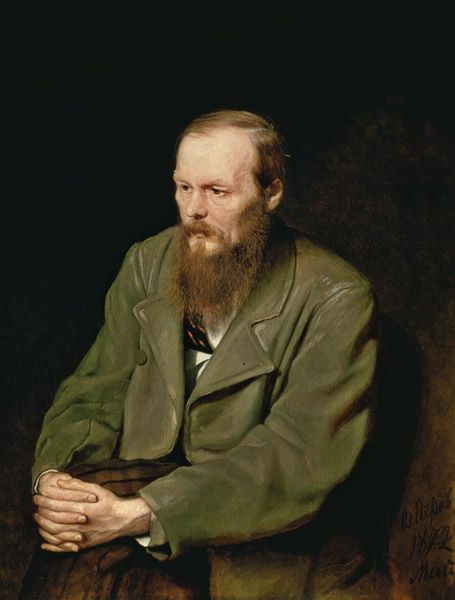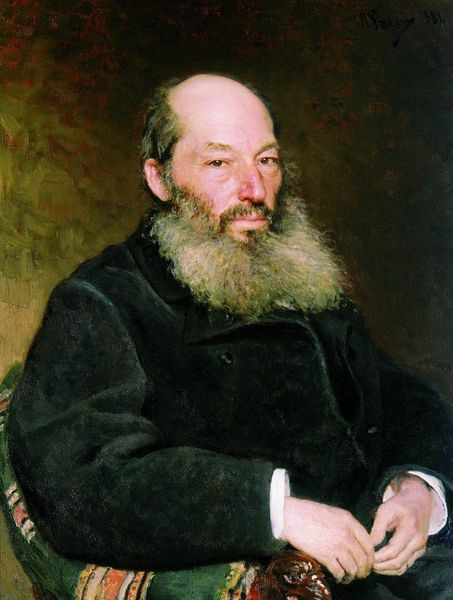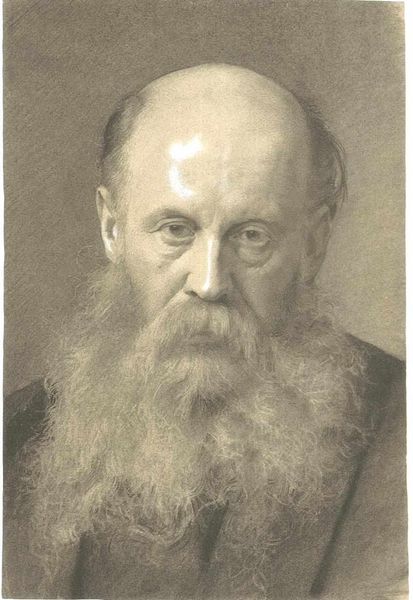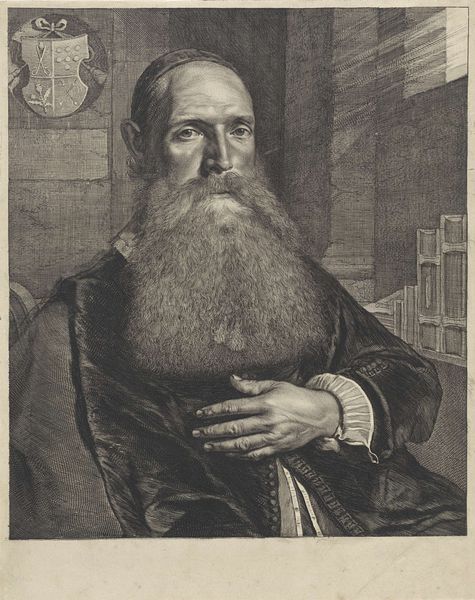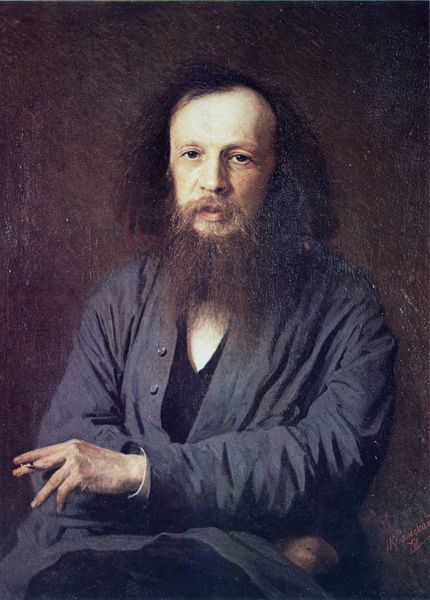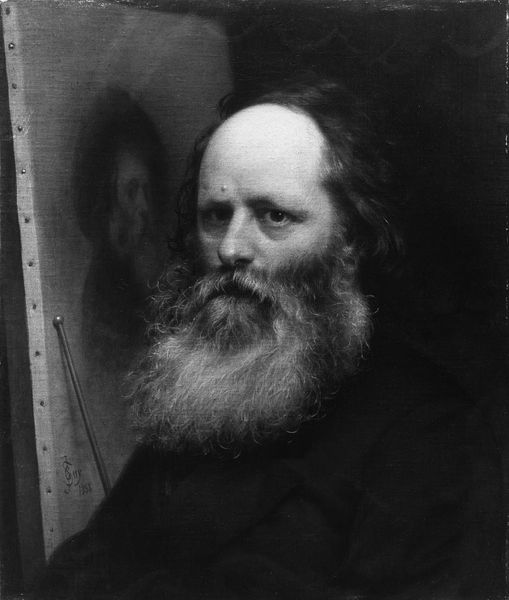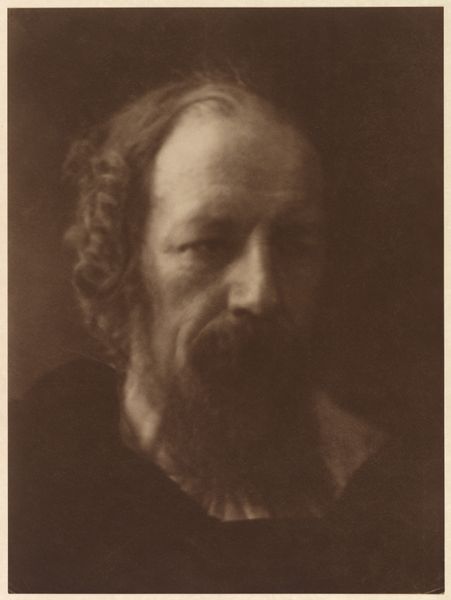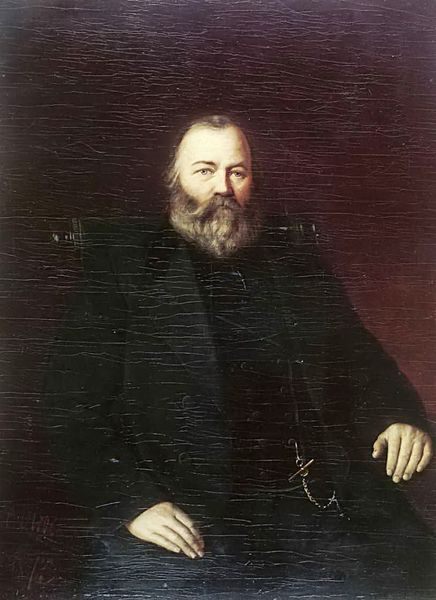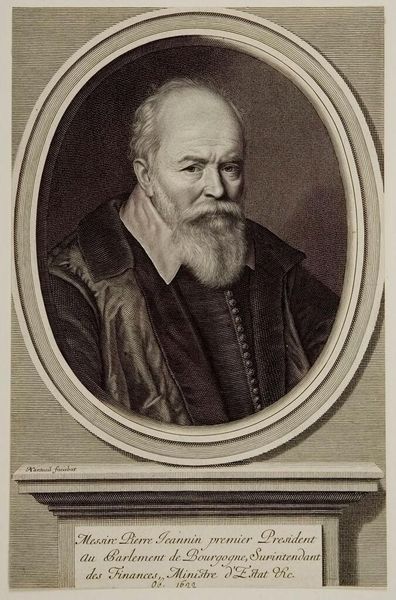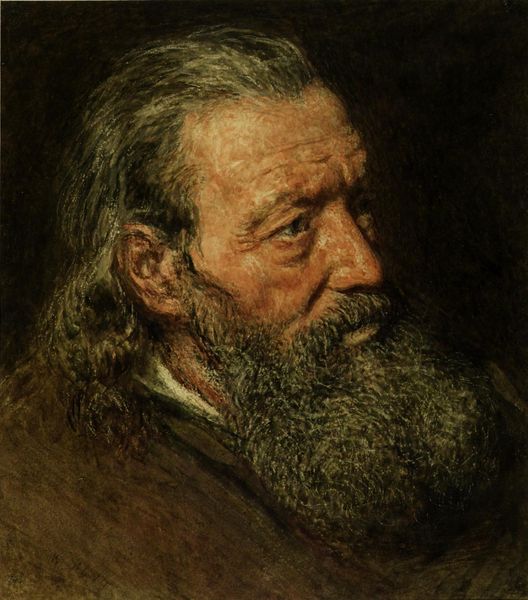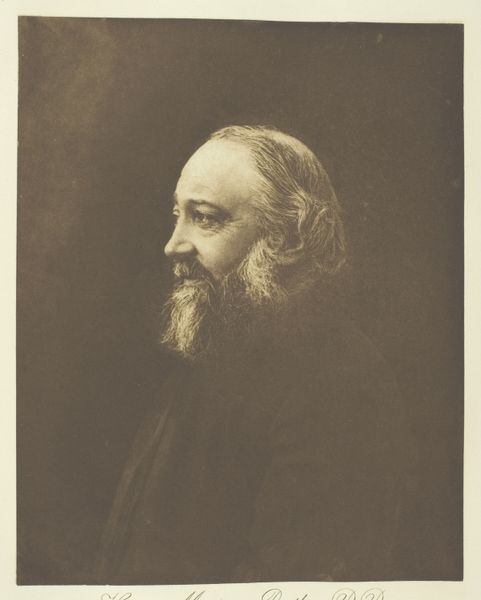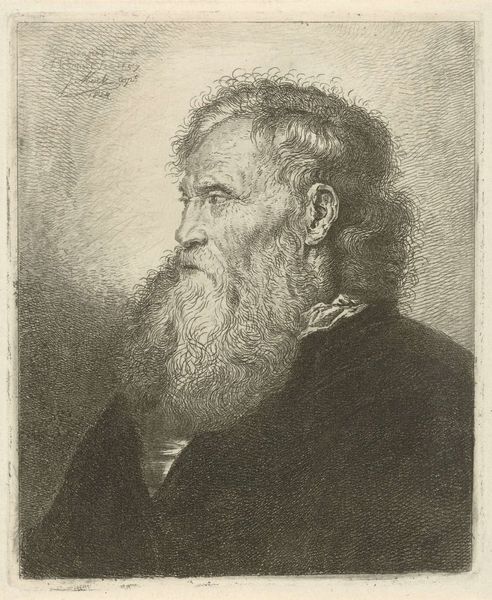
Portræt af zoologen, professor H.N. Krøyer, kunstnerens plejefader 1868
0:00
0:00
Dimensions: 32 cm (height) x 24 cm (width) (Netto)
Editor: Here we have P.S. Krøyer's portrait of his stepfather, Professor H.N. Krøyer, rendered in oil on canvas in 1868. The monochrome palette really stands out to me. What strikes you most about it? Curator: Well, looking at this piece, I immediately consider the availability and cost of materials in 1868. High-quality pigments were expensive. Krøyer’s choice of a monochrome palette might be driven less by aesthetic preference and more by economic factors, and the availability of certain pigments versus others. Editor: That's interesting! I hadn’t considered the economic constraints. It’s easy to just assume artistic choice, but you’re saying there’s a material reality at play here. Curator: Precisely. Also, think about the canvas itself. Where did it come from? Who produced it? What were the labor conditions like? The materiality of art isn’t just about aesthetics. It's embedded in social relations and processes. How might the production of these materials have affected Krøyer’s artistic process? Editor: So, the texture and weave of the canvas, the refinement or lack thereof of the oil paints – these would all affect the image he’s creating. Did the quality of the available materials change his approach to the portrait? Curator: Exactly! Did he adapt his technique to suit the available materials? Or did the very limitations push him toward specific artistic decisions, perhaps simplifying forms and focusing on texture because of those material constraints? Editor: It definitely gives me a different perspective on this and other portraits from this time period. It is about much more than just the subject and the artist’s skill. Curator: Indeed. Considering the labor and production process behind seemingly simple choices forces us to confront art's entanglement within broader material and economic systems.
Comments
No comments
Be the first to comment and join the conversation on the ultimate creative platform.
